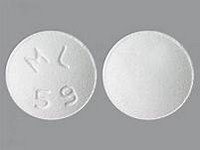Candesartan cilexetil

Candesartan cilexetil
CLINICAL USE
Angiotensin-II antagonist:
Hypertension Heart failure DOSE IN NORMAL RENAL FUNCTION
2–32 mg daily PHARMACOKINETICS
Molecular weight :610.7 %Protein binding :>99 %Excreted unchanged in urine : 26 Volume of distribution (L/kg) :0.1half-life – normal/ESRD (hrs) :9/18 DOSE IN RENAL IMPAIRMENT
GFR (mL/MIN)
20 to 50 : Dose as in normal renal function 10 to 20 : Initial dose 2 mg and increase according to response <10 : Initial dose 2 mg and increase according to response DOSE IN PATIENTS UNDERGOING RENAL REPLACEMENT THERAPIES
CAPD :Unlikely to be dialysed. Dose as for GFR <10 mL/min HD :Not dialysed. Dose as for GFR <10 mL/minHDF/high flux :Not dialysed. Dose as for GFR <10 mL/minCAV/VVHD :Unlikely to be dialysed. Dose as for GFR 10 to 20 mL/min IMPORTANT DRUG INTERACTIONS
Potentially hazardous interactions with other drugsAnaesthetics: enhanced hypotensive effect Analgesics: antagonism of hypotensive effect and increased risk of renal impairment with NSAIDs; hyperkalaemia with ketorolac and other NSAIDsCiclosporin: increased risk of hyperkalaemia and nephrotoxicityDiuretics: enhanced hypotensive effect; hyperkalaemia with potassium-sparing diureticsEpoetin: increased risk of hyperkalaemia; antagonism of hypotensive effectLithium: reduced excretion, possibility of enhanced lithium toxicityPotassium salts: increased risk of hyperkalaemia. Tacrolimus: increased risk of hyperkalaemia and nephrotoxicity ADMINISTRATION
Reconstition
– Route
Oral Rate of Administration
–Comments
– OTHER INFORMATION
In patients with mild–moderate renal impairment Cmax and AUC are increased by 50% and 70% respectively. Corresponding changes in patients with severe renal impairment are 50% and 110% respectivelyAdverse reactions, especially hyperkalaemia, are more common in patients with renal impairmentRenal failure has been reported in association with angiotensin-II antagonists in patients with renal artery stenosis, post renal transplant, and in those with congestive heart failureClose monitoring of renal function during therapy is necessary in those with renal insufficiency
See how to identify renal failure stages according to GFR calculation
See how to diagnose irreversible renal disease
Home









